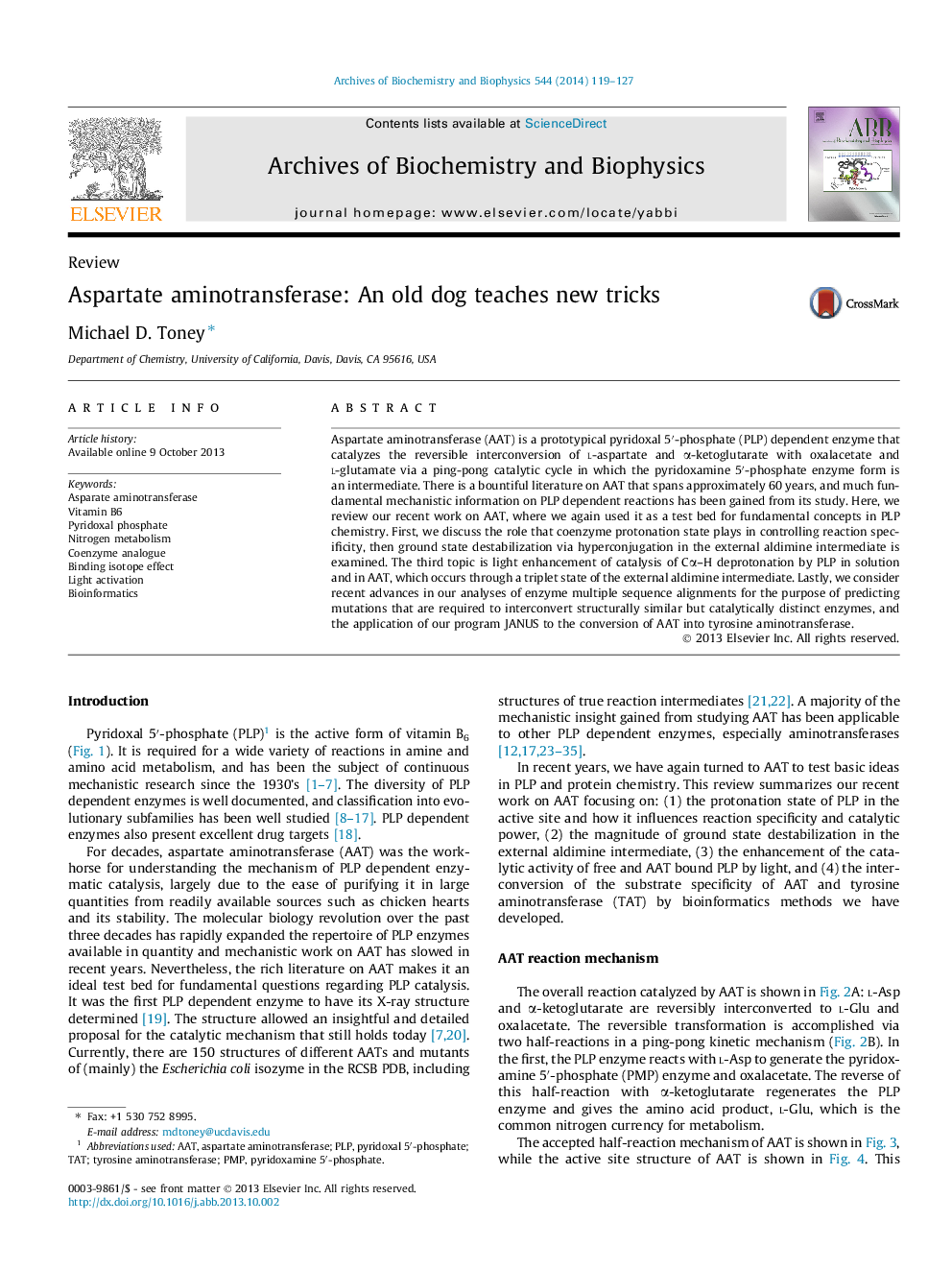| Article ID | Journal | Published Year | Pages | File Type |
|---|---|---|---|---|
| 1925239 | Archives of Biochemistry and Biophysics | 2014 | 9 Pages |
•AAT is a source of important fundamental mechanistic information on PLP catalysis.•Protonation state of the external aldimine plays a major role in controlling reaction specificity.•Ground state destabilization due to hyperconjugation is important in AAT.•Transamination is enhanced by light absorption both in solution and on AAT.
Aspartate aminotransferase (AAT) is a prototypical pyridoxal 5′-phosphate (PLP) dependent enzyme that catalyzes the reversible interconversion of l-aspartate and α-ketoglutarate with oxalacetate and l-glutamate via a ping-pong catalytic cycle in which the pyridoxamine 5′-phosphate enzyme form is an intermediate. There is a bountiful literature on AAT that spans approximately 60 years, and much fundamental mechanistic information on PLP dependent reactions has been gained from its study. Here, we review our recent work on AAT, where we again used it as a test bed for fundamental concepts in PLP chemistry. First, we discuss the role that coenzyme protonation state plays in controlling reaction specificity, then ground state destabilization via hyperconjugation in the external aldimine intermediate is examined. The third topic is light enhancement of catalysis of Cα–H deprotonation by PLP in solution and in AAT, which occurs through a triplet state of the external aldimine intermediate. Lastly, we consider recent advances in our analyses of enzyme multiple sequence alignments for the purpose of predicting mutations that are required to interconvert structurally similar but catalytically distinct enzymes, and the application of our program JANUS to the conversion of AAT into tyrosine aminotransferase.
Graphical abstractFigure optionsDownload full-size imageDownload high-quality image (146 K)Download as PowerPoint slide
